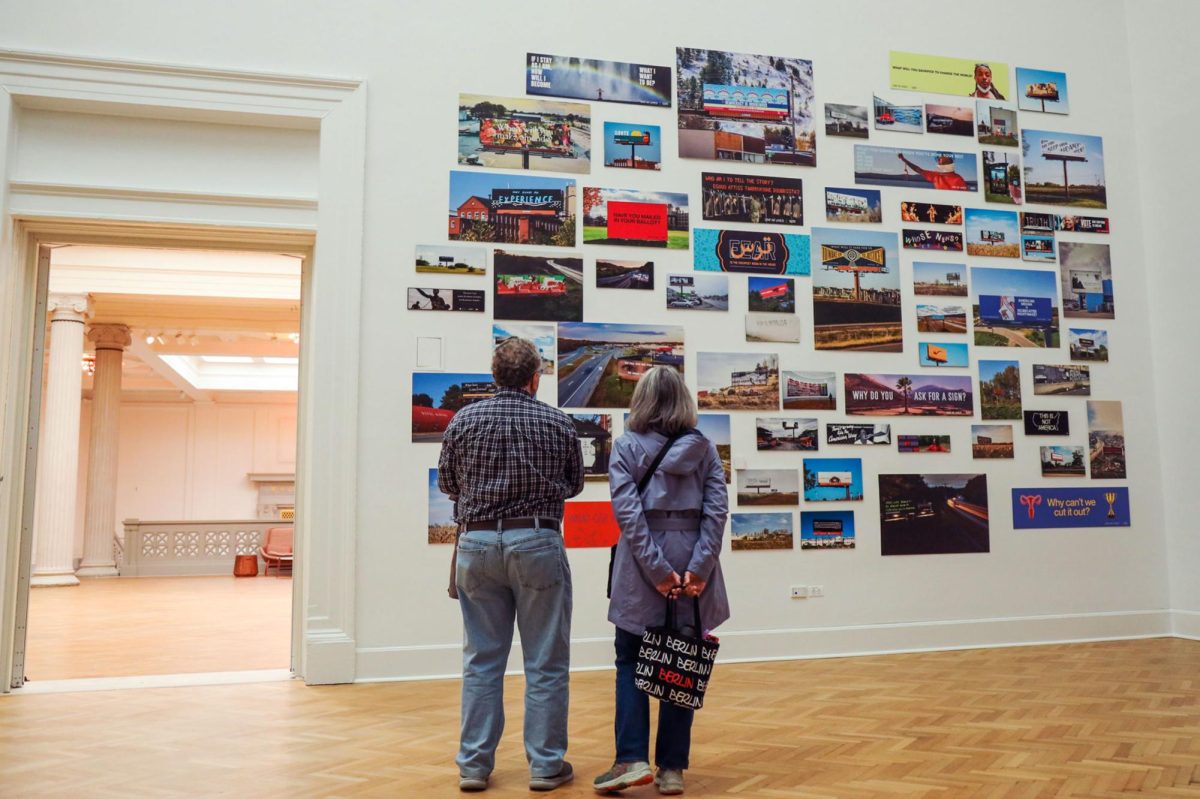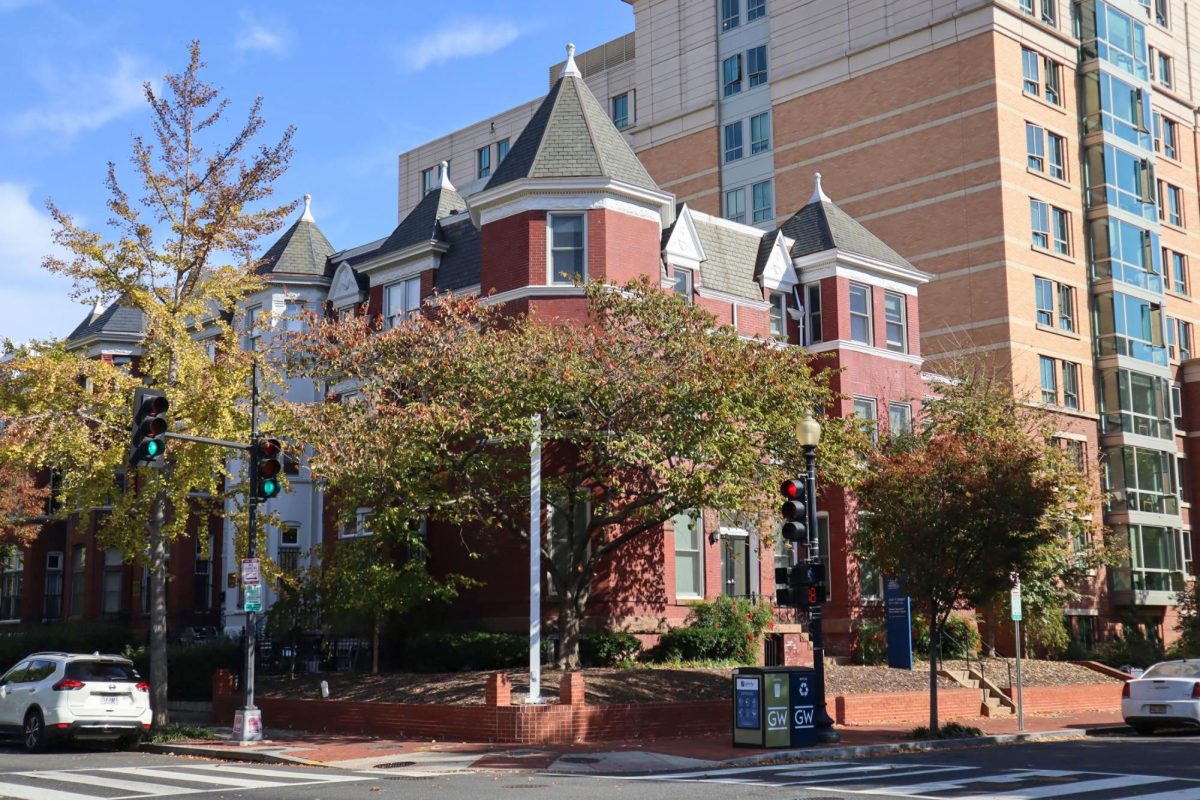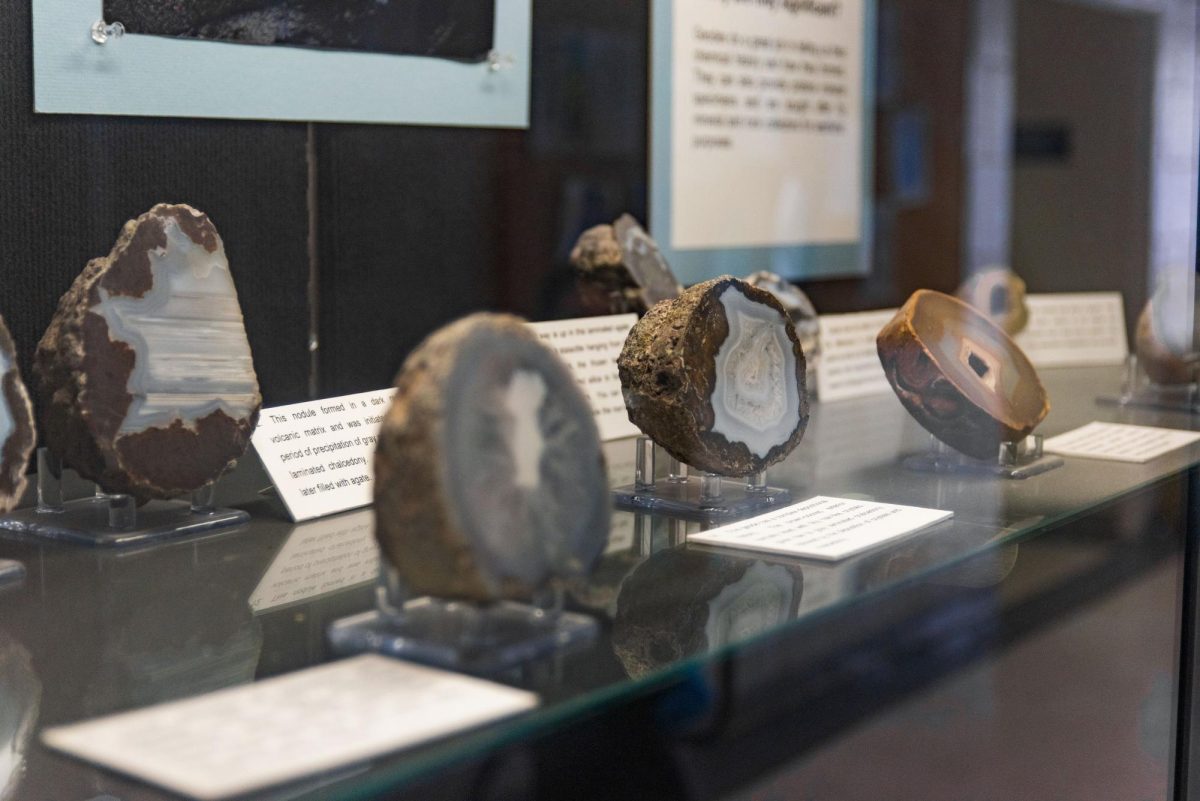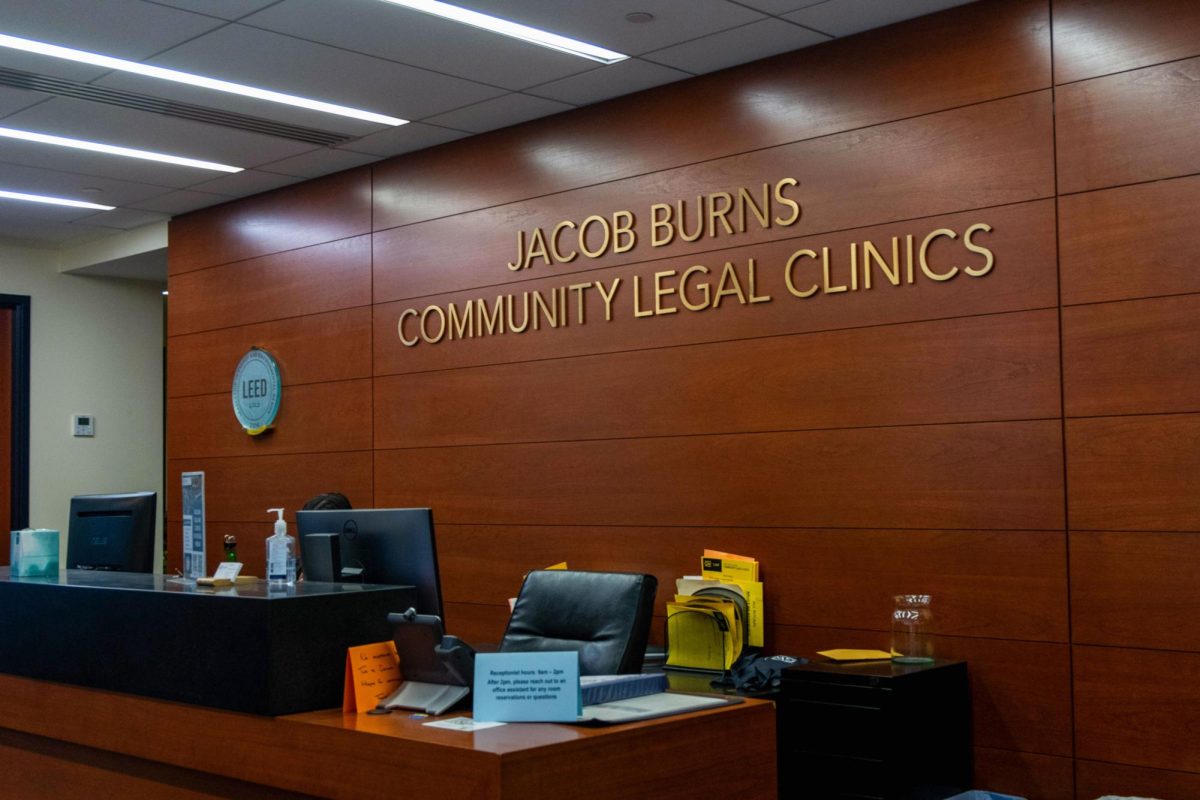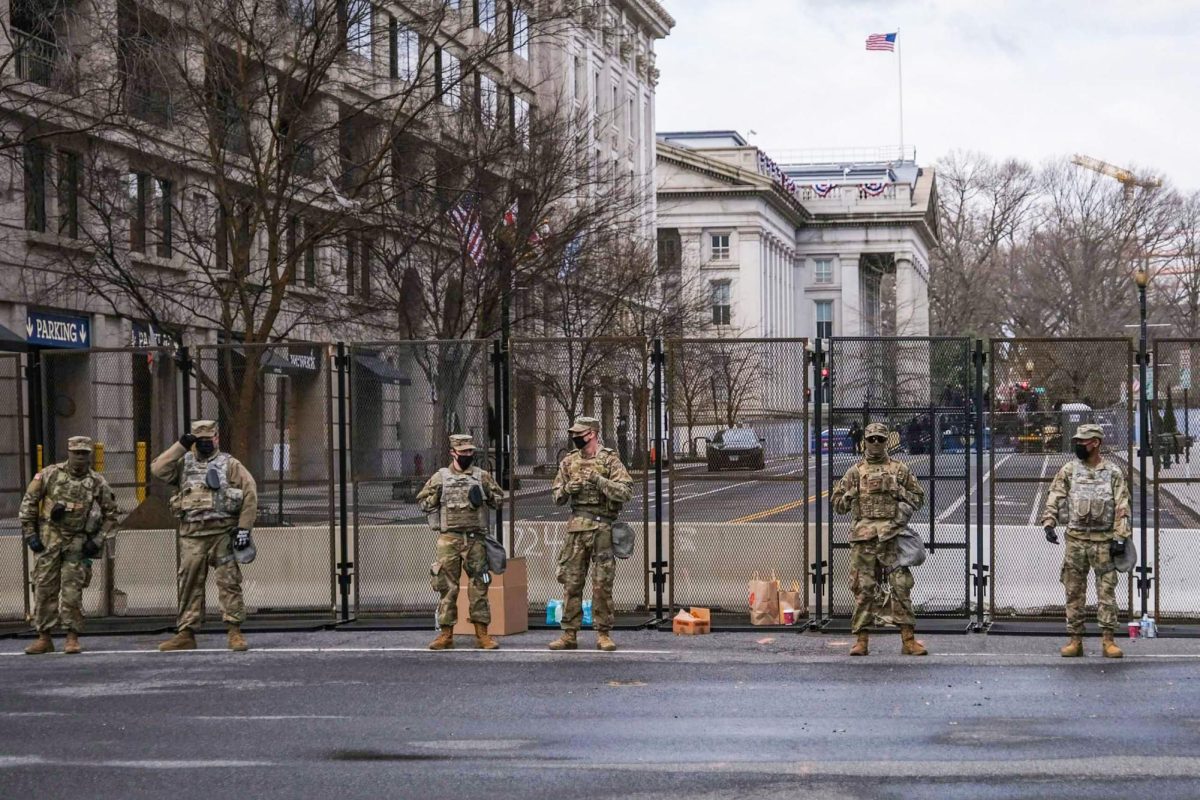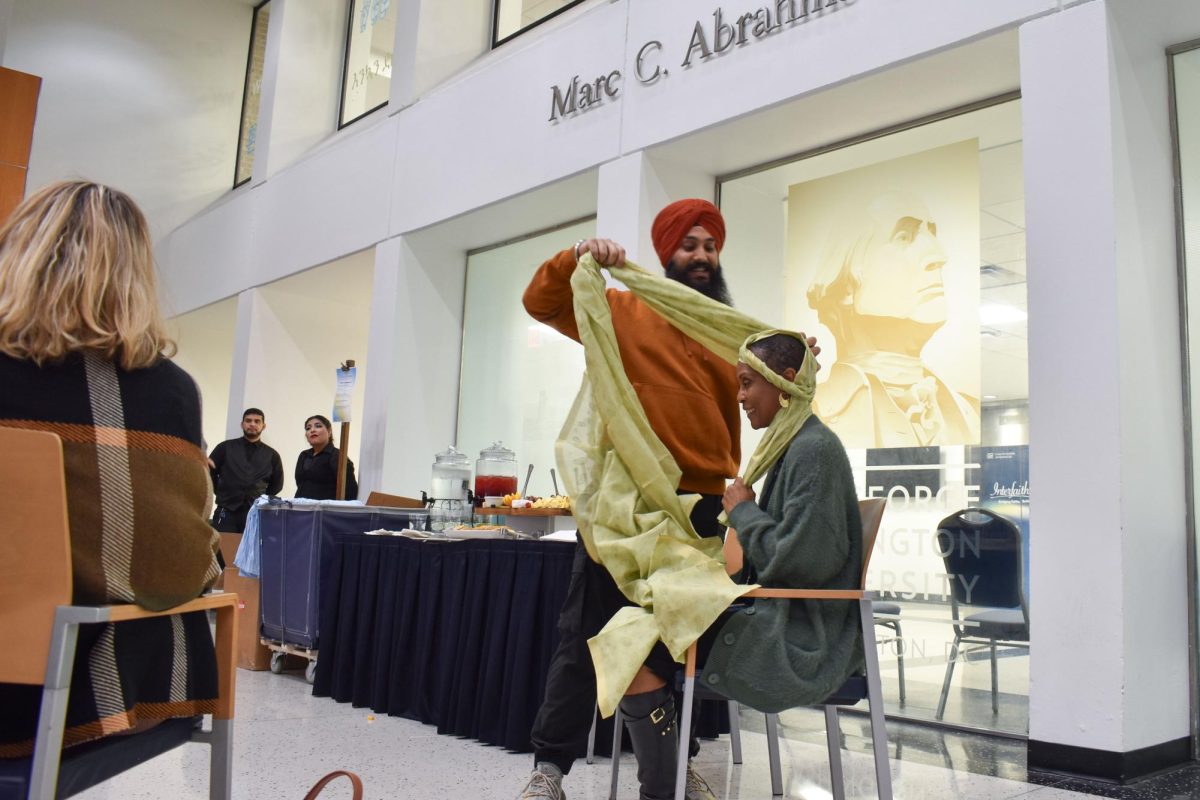The Corcoran School of the Arts & Design announced last month that it had expanded its partnership with the National Gallery of Art to include a three-year residency with an artist collective that produces multimedia art to uplift civic engagement.
For Freedoms, an artist-led organization that leads art installations and events around the country centered on the intersection of art and politics, showcased their debut exhibition on billboard art on Oct. 9 in the Flagg Building. Corcoran and the NGA will provide For Freedoms’ artists with spaces to create and display their art including the Flagg Building and host events for students and community members to interact with the work, according to a release.
The artist collective’s debut exhibition displayed photographs of For Freedoms’ nationwide billboard collection showcasing various billboards across the United States that highlight local and state-specific political and social issues for community awareness, according to the collective’s website. The showcase will remain on the second floor of the Flagg Building until mid-December.
Lauren Onkey, the director of Corcoran and a professor of music, said having artists in residency will bring new ideas and voices “to the table” and create more opportunities for students to engage with the NGA.
“The Corcoran had brought For Freedoms into a project a number of years ago as well,” Onkey said. “It was an organization we were aware of and their commitment to the arts and civic engagement, the arts in the world, it was certainly also something that was a shared value for all of us.”
Some billboards in the exhibit display questions including “Have you mailed in your ballot?” or “American Dream = Segregated Nightmare?” and other billboards feature questions like “What can we do with all this pain?” or “How late would it be right now if this was all a dream?”
The opening weekend from Oct. 4 to 6 included the billboard exhibition, presentations and a kite-making event open to the public. Officials hosted events like the presentation “Body and Sites of Performance: Memory and History,” on Oct. 4, “Archives and Artifacts: Accessibility, Restitution and Stewardship,” on Oct. 5 and “Labor and the Creative Workforce: Repair, Creation and Social Engagement” on Oct. 6.
The residency comes a year after officials revised an agreement with the NGA to renovate the Flagg Building and add collaborative spaces for Corcoran students and NGA staff to work together on exhibitions, performances and creative projects. Corcoran and the NGA first began their partnership in 2014 and professors said at the time that the original partnership was drafted “so quickly” that both groups struggled to develop specific goals for the collaboration.
GW acquired the Corcoran Gallery of Art — D.C.’s oldest private art museum and a college of art and design before its dissolution — in 2014 and the Board of Trustees dissolved the museum operations of the gallery in 2014. GW and the NGA bought and divided up the gallery’s assets, leaving the NGA with rights to the Corcoran art collection and giving GW the Flagg Building and Corcoran College of Art & Design, which they renamed the Corcoran School of the Arts & Design.
Onkey said for the first year of the partnership, the school focused on building relationships between students and the NGA and creating opportunities for students and faculty to have “behind the scenes” experiences with the NGA. She said while the main focus of the partnership is currently the residency, the school will continue to provide opportunities for students, like conversing with designers at the NGA through events.
“Whether it’s touring a conservation lab for Museum Studies students, or our students in design being able to talk with the designers at the National Gallery on how they face certain challenges in exhibiting art, those will continue,” Onkey said.
Onkey said For Freedoms work will “spark” students and faculty to think about the role of art in politics and the community.
The residency includes lab space in the Flagg Building for students and faculty to create art encouraging public participation in community and political issues. Corcoran and the NGA plan to host various events, discussions and exhibitions to allow students and the public to engage with work by For Freedoms artists.
“Sometimes we can think about the arts and civic engagement in a not-so-explicitly political way, like thinking about who is part of community outreach when we think about the arts or who has access to the arts,” Onkey said.
Onkey said For Freedoms’ events and exhibitions at Corcoran and the National Gallery will be free and open to the public.
“They’re thinking about a very broad audience, not only D.C. but across the country with people coming to D.C. and wanting to visit the National Gallery of Art,” Onkey said.


